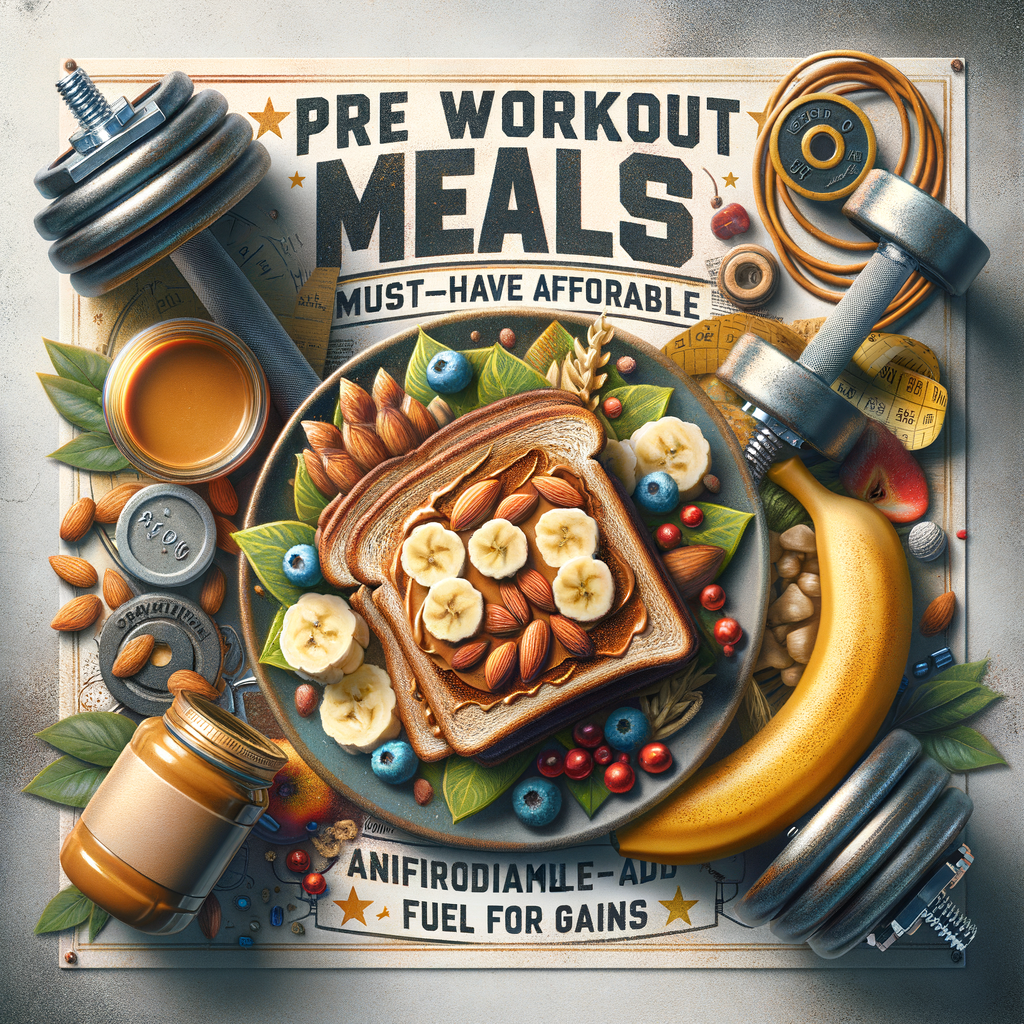- Why Rest Days Matter in Bodybuilding
- What Happens to Muscles During Recovery
- Types of Rest Days: Active vs Passive
- How Often Should You Take Rest Days?
- Planning Rest Days in Your Program
- Nutrition on Rest Days: What to Eat
- Macronutrient Guidelines for Rest Days
- Meal Timing and Frequency
- Supplements That Support Rest Days
- Sleep: The Most Powerful Recovery Tool
- Stress Management and Its Role in Recovery
- Active Recovery Techniques
- Contrast Therapy, Sauna, and Cold Exposure
- Mobility and Flexibility on Rest Days
- Common Mistakes on Rest Days
- Signs You Need More Rest
- How to Deload Effectively
- Rest Days Across Different Bodybuilding Phases
- Sample Weekly Plan: Rest Days Included
- Tracking Recovery: Tools and Metrics
- Psychological Benefits of Rest Days
- How to Make Rest Days Productive
- Adjusting Rest Days for Age and Experience
- Team Sports and Bodybuilding: Managing Multiple Demands
- Case Studies: How Rest Days Improved Results
- Common Myths About Rest Days
- Troubleshooting Plateaus with Rest Days
- Balancing Cardio and Rest for Bodybuilders
- How Coaches Use Rest Days for Peak Performance
- Quick Reference: Rest Day Checklist
- Sample 4-Week Cycle with Rest Days
- Final Thoughts
- Frequently Asked Questions (FAQs)
- References
Introduction
Rest Days Bodybuilding matters more than most lifters realize. Many athletes focus on training volume and intensity, but they often neglect recovery. Yet, without proper rest, gains stall and injury risk rises.
In this guide, I explain how to use rest days to boost strength and size. I cover physiology, nutrition, sleep, active recovery, and planning. Above all, you will learn practical steps to make rest days work for your gains.
Why Rest Days Matter in Bodybuilding
Rest days help muscles repair and grow. When you lift, you create microtears in muscle fibers. During recovery, your body rebuilds those fibers stronger and larger. Therefore, recovery drives hypertrophy more than more training alone.
Moreover, rest days restore the nervous system. Heavy lifting taxes neural drive and coordination. Consequently, without time off, your lifting technique and strength suffer. In short, rest days protect your progress and keep performance high.
What Happens to Muscles During Recovery
After a hard session, inflammation and metabolic stress rise. Your body sends immune cells and nutrients to damaged tissue. Those processes clear debris and trigger protein synthesis.
At the same time, hormones like growth hormone and testosterone support repair. Conversely, catabolic signals like cortisol can rise with inadequate rest. Thus, balancing anabolic and catabolic forces determines how well you recover.
Types of Rest Days: Active vs Passive
You can choose active or passive rest days. Passive rest means full physical rest and minimal exertion. You avoid heavy lifting and intense cardio. This approach suits lifters who train very hard or feel exhausted.
Active rest includes light movement such as walking, mobility drills, or low-intensity cycling. Active recovery helps blood flow and reduces soreness. Furthermore, it preserves work capacity while preventing stiffness. Choose the type based on fatigue, training phase, and goals.
How Often Should You Take Rest Days?
Most lifters benefit from one to three rest days per week. Beginners may need more recovery because their bodies adapt to training stress. Meanwhile, advanced lifters often train more frequently but manage intensity carefully.
Also, listen to your body. If you feel persistent soreness, low motivation, or poor sleep, add rest days. Similarly, use deloads or extended recovery weeks every 4–12 weeks. These breaks prevent overtraining and reset performance.
Planning Rest Days in Your Program
Position rest days after your hardest sessions. For instance, place a rest day after heavy lower-body work. This order reduces injury risk and improves subsequent performance. Conversely, avoid stacking all rest days before tough sessions.
Additionally, adjust rest days around life stress. If you travel or work late, schedule rest near those events. Flexibility helps maintain consistency. Consequently, you reduce missed workouts and keep momentum.
Nutrition on Rest Days: What to Eat
Your body still needs calories and protein on rest days. Protein supports muscle repair and prevents breakdown. Aim for 0.7–1.0 grams per pound of body weight daily, then distribute it across meals. This strategy sustains muscle protein synthesis.
Carbohydrates help replenish glycogen, especially after intense training. However, adjust carbs based on activity level. On passive rest days, slightly reduce carbs and calories. On active rest days, keep carbs higher to fuel movement and recovery.
Macronutrient Guidelines for Rest Days
– Protein: 0.7–1.0 g per pound body weight daily
– Carbs: moderate to low on passive rest days, moderate on active days
– Fats: make up remaining calories; focus on healthy fats
Also, prioritize micronutrients. Vitamins and minerals support immune function and muscle repair. Finally, hydrate well. Water moves nutrients and aids recovery.
Meal Timing and Frequency
Spread protein evenly across meals. Doing so maximizes muscle protein synthesis spikes. For example, eat 20–40 grams of protein every 3–4 hours. Likewise, include a protein-rich meal within two hours of training.
However, avoid rigid timing if you train late. Focus on total daily intake first. Then refine meal timing to match your schedule. Consistency beats perfection.
Supplements That Support Rest Days
Supplements can help but do not replace food. Creatine monohydrate supports recovery and strength. Also, omega-3s reduce inflammation and support joint health. Protein powder provides convenient daily protein.
Additionally, consider vitamin D and magnesium if you have deficiencies. Branched-chain amino acids (BCAAs) may help reduce perceived soreness. Yet, whole protein sources deliver better results. In short, prioritize supplements to fill gaps, not replace meals.
Sleep: The Most Powerful Recovery Tool
Sleep drives hormonal recovery and cognitive restoration. During deep sleep, your body releases growth hormone. That hormone aids muscle repair and fat metabolism. Therefore, aim for 7–9 hours of quality sleep each night.
Also, maintain a consistent sleep schedule. Go to bed and wake up at similar times. Reduce screens before bed and keep your room cool and dark. These habits improve sleep efficiency and recovery.
Stress Management and Its Role in Recovery
Chronic stress raises cortisol and hampers gains. Consequently, manage stress through relaxation, time management, or counseling. Breathing exercises and mindfulness can lower stress quickly.
Furthermore, social support helps you stay consistent and motivated. Talk with training partners or join communities to share progress and setbacks. Social bonds improve adherence and reduce mental fatigue.
Active Recovery Techniques
Active recovery methods include walking, light cycling, yoga, and mobility drills. These activities promote blood flow and speed up nutrient delivery. As a result, you reduce soreness and stiffness.
Also, use foam rolling and soft-tissue work. Self-myofascial release loosens tight muscles and improves movement. However, avoid aggressive or painful rolling after intense workouts. Gentle pressure works best.
Contrast Therapy, Sauna, and Cold Exposure
Contrast therapy alternates hot and cold to stimulate circulation. Similarly, saunas relax muscles and improve recovery when used sensibly. Cold baths or cryotherapy can reduce acute inflammation and soreness.
Nevertheless, use these methods strategically. For instance, avoid regular cold exposure immediately after strength training. It can blunt some hypertrophy signals. Therefore, apply them when soreness and inflammation dominate.
Mobility and Flexibility on Rest Days
Work on weaknesses and mobility during rest days. Tight hips or thoracic stiffness can limit lifts and cause compensation. Simple mobility drills improve range of motion and technique.
Moreover, short mobility sessions don’t impair recovery. Spend 10–20 minutes daily on controlled stretches, banded distraction, and thoracic rotation. These small investments yield big performance returns.
Common Mistakes on Rest Days
Many lifters either overdo rest or underdo it. Some avoid activity entirely and stall blood flow. Others train too hard and impair recovery. Balance is crucial for best gains.
Also, poor nutrition and sleep undermine rest day benefits. Skipping protein or staying up late negates recovery. Finally, ignoring mental rest leads to burnout. Treat rest days as part of the program, not a reward.
Signs You Need More Rest
Watch for persistent fatigue, plateaued lifts, and constant muscle soreness. Other signs include decreased motivation and poor sleep. Additionally, repeated minor injuries indicate under-recovery.
To act, add a passive rest day or a deload week. Reduce training load by 30–50% for a week. You will often regain strength and feel fresh.
How to Deload Effectively
A deload means a planned reduction in volume or intensity. Reduce sets, lower weights, or cut frequency. For example, drop weights to 50–60% for the week and keep technique sharp.
Deloads last one week usually. Yet, adjust length based on fatigue. Use them after long training blocks or when performance stalls. Deloads prevent overtraining and speed long-term progress.
Rest Days Across Different Bodybuilding Phases
During a bulking phase, you might train harder and need more rest. Heavy, high-volume training creates more damage and energy demand. Therefore, include at least one passive rest day weekly and one active day.
In a cutting phase, energy drops and recovery slows. You will feel more fatigued with less food. So, increase rest or shorten sessions to preserve muscle. Conversely, maintain protein and sleep to protect gains.
Sample Weekly Plan: Rest Days Included
Below is a simple week for an intermediate bodybuilder. It balances heavy sessions, volume, and rest.
| Day | Session |
|---|---|
| Monday | Heavy Lower Body |
| Tuesday | Upper Body Hypertrophy |
| Wednesday | Active Rest (Mobility + Light Cardio) |
| Thursday | Heavy Upper Body |
| Friday | Lower Body Hypertrophy |
| Saturday | Passive Rest or Light Activity |
| Sunday | Full Rest or Recreational Activity |
Use this plan as a template. Tweak rest placement according to your schedule and recovery needs.
Tracking Recovery: Tools and Metrics
Track sleep, mood, and training performance. Use a training log to record weights, reps, and perceived exertion. Trends reveal when you need rest.
Also, use simple metrics like morning heart rate or heart rate variability (HRV). A sudden rise in resting heart rate suggests fatigue. Conversely, steady HRV indicates good recovery. Use these tools to make informed rest-day decisions.
Psychological Benefits of Rest Days
Rest days protect motivation and enjoyment. Constant high-intensity training can feel like a grind. Planned breaks renew enthusiasm and prevent burnout.
Furthermore, rest days let you focus on life priorities. Spend time with family or pursue hobbies. This balance supports long-term consistency and better results.
How to Make Rest Days Productive
Keep rest days purposeful. Use them to meal prep, plan workouts, or work on mobility. Briefly review technique with low-load drills. These actions keep you on track without adding fatigue.
Also, set small goals for rest days. For example, hit a sleep target or complete a 20-minute walk. Small wins build momentum and reinforce positive habits.
Adjusting Rest Days for Age and Experience
Older lifters often need more recovery. Recovery capacity decreases with age due to hormonal and tissue changes. Therefore, increase rest days and emphasize sleep, nutrition, and mobility.
Beginners adapt faster but still need rest. Their central nervous system may not tolerate high frequency initially. So, start with 2–3 training days and include rest days between sessions.
Team Sports and Bodybuilding: Managing Multiple Demands
If you play sports and lift, balance both demands. Team practices add volume and stress. Coordinate with coaches and reduce lifting intensity on high-practice days.
Also, prioritize recovery during competition seasons. Shift to maintenance rather than aggressive progression. This approach prevents overuse injuries and maintains performance.
Case Studies: How Rest Days Improved Results
Case 1: A lifter hit a plateau while training six days weekly. After adding two rest days and better sleep, strength returned. The lifter also reported less soreness and more motivation.
Case 2: A competitor used active rest and contrast therapy during prep. They preserved muscle while dropping fat. Consequently, performance stayed high during the contest.
These examples show that smart rest enhances long-term progress.
Common Myths About Rest Days
Myth: Rest days make you lose gains. Reality: Gains require recovery, not constant work. Rest supports muscle growth and strength.
Myth: Active rest hinders progress. Reality: Low-intensity activity improves circulation and mobility. It rarely impairs recovery when kept light.
Myth: You must rest the same way every week. Reality: Recovery needs vary. Change rest types, duration, and timing to match training and life stressors.
Troubleshooting Plateaus with Rest Days
If lifts stall, first review sleep, nutrition, and stress. Often, small changes restore progress. Add one extra rest day or a deload week if issues persist.
Also, analyze training intensity and volume. Overtraining often hides in too much volume. Reduce sets or frequency before adding extra work. That approach often breaks plateaus quickly.
Balancing Cardio and Rest for Bodybuilders
Cardio aids conditioning and fat loss, but it adds workload. Use low-impact steady-state or short interval sessions on active rest days. Keep cardio under 30 minutes for minimal interference.
If conditioning demands increase, adjust resistance training. Prioritize hard lifting and schedule cardio after weights or on separate days. This order preserves strength and hypertrophy.
How Coaches Use Rest Days for Peak Performance
Coaches periodize training and schedule rest strategically. They plan deloads, tapering, and recovery blocks. This structure prevents overreach and optimizes peaking for competitions.
Moreover, coaches use data like HRV and session RPE to individualize rest. They ensure rest aligns with the athlete’s capacity and timeline. Consequently, lifters progress consistently and avoid burnout.
Quick Reference: Rest Day Checklist
– Prioritize 7–9 hours of sleep
– Meet daily protein targets
– Hydrate adequately
– Include 10–20 minutes of mobility work on active rest days
– Use foam rolling or soft-tissue tools gently
– Avoid hard training and heavy loading
– Track mood, sleep, and performance metrics
Use this checklist to make rest days efficient and aligned with your goals.
Sample 4-Week Cycle with Rest Days
Week 1: Normal volume, one active rest day midweek, one passive rest day weekend.
Week 2: Slight volume increase, active rest midweek, passive rest weekend.
Week 3: Peak volume, maintain rest days but focus on sleep and nutrition.
Week 4: Deload week, reduce intensity 40–60%, keep mobility and short cardio.
This cycle balances stress and recovery. Adjust lengths based on your training age and goals.
Final Thoughts
Rest Days Bodybuilding isn’t optional if you want optimal gains. You must treat rest as training’s partner. Plan rest days deliberately, fuel your body well, and prioritize sleep.
Also, tailor rest to your life, age, and training phase. Small changes like an extra sleep hour or active mobility can produce big results. Finally, remember consistency beats intensity spikes. Use rest smartly to achieve your best gains.
Frequently Asked Questions (FAQs)
1. How many rest days should a natural bodybuilder take weekly?
Answer: Natural lifters typically take 1–3 rest days weekly. Individual factors like age, training intensity, and recovery capacity determine the exact number.
2. Can I do heavy cardio on a rest day?
Answer: No. Heavy cardio increases fatigue and impairs recovery. Instead, choose low-intensity cardio if you want activity.
3. Will rest days cause fat gain during a bulk?
Answer: Not if you manage calories. Rest days alone don’t cause fat gain. Control daily calorie surplus and maintain protein intake.
4. Is it okay to skip protein on a rest day?
Answer: No. Protein remains vital for repair. Keep protein intake consistent across training and rest days.
5. Can I use cold baths every rest day?
Answer: You can, but regular cold exposure may blunt hypertrophy signals if used immediately after strength sessions. Use them selectively.
6. How long should a deload last?
Answer: Most deloads last one week. However, you can extend to two weeks if you feel very fatigued or after long training blocks.
7. Should I still track workouts on rest days?
Answer: Yes. Track sleep, mood, and light activity. These metrics inform recovery and programming adjustments.
8. Can mobility work replace a rest day?
Answer: Mobility work complements rest, but it should remain low intensity. Treat it as active recovery rather than full training.
9. Do rest days change during competition prep?
Answer: Yes. During prep, you may add passive rest days due to lower calories and increased stress. Preserve protein and sleep to protect muscle.
10. How quickly will I see benefits after improving rest day habits?
Answer: You may notice better mood and reduced soreness within days. Strength and muscle gains show over weeks when habits remain consistent.
References
– Schoenfeld, B. J. (2010). The mechanisms of muscle hypertrophy and their application to resistance training. Journal of Strength and Conditioning Research. https://journals.lww.com/nsca-jscr/Fulltext/2010/10000/The_Mechanisms_of_Muscle_Hypertrophy_and_Their.27.aspx
– Hausswirth, C., & Mujika, I. (2013). Recovery for Performance in Sport. Human Kinetics. https://us.humankinetics.com/products/recovery-for-performance-in-sport
– Peake, J. M., Suzuki, K., & Coombes, J. S. (2017). The influence of antioxidant supplementation on muscle recovery (Incomplete: max_output_tokens)



